Overview of diseases and pests of roses
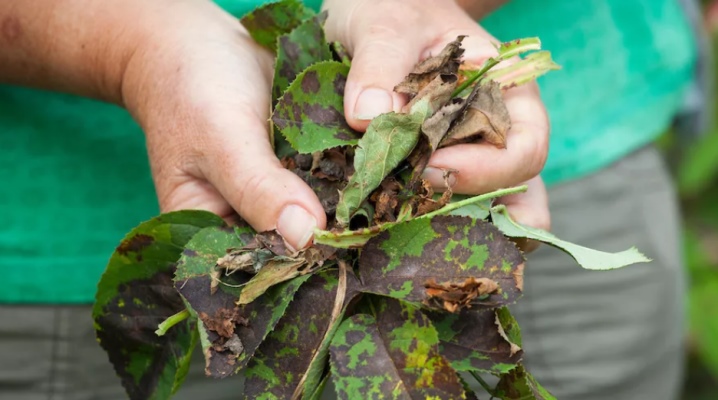
Roses - garden, tea and indoor bush roses - are considered one of the most beautiful flowers, but their healthy condition can be maintained only if the shoots and leaves do not infect diseases or pests. When deciding how to treat them in summer and spring for prevention, it is worth carefully studying the possible symptoms in order to recognize the signs of infection in time. Pest control methods on climbing and indoor roses are always selected based on the precisely established cause of the problems.
Diseases and their treatment
Diseases of roses do not develop instantly. A description of their signs, manifested in the form of yellow leaves, white bloom, spots, in the fall of flowers and buds, their deformation, allows you to timely recognize the problem, choose a method that allows you to treat climbing garden, indoor or bush plants. The methods of struggle are also different. By tracking the symptoms, you can determine with high accuracy what drugs will be needed to restore the health of the flowers.
Symptoms of problems always show up individually. An experienced grower will immediately notice spots on the leaves or realize that the buds do not open. Diseases of roses are usually classified based on the reasons for their occurrence. The most common ones are worth exploring in more detail.
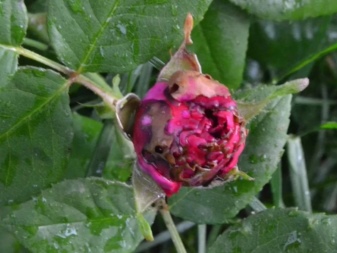

Most often, the following factors have a negative impact on the state of plants.
- Features of the climate in the region. It is not always safe to plant bushes without shelter.
- Weather conditions for a specific season. In prolonged periods of high humidity, plants lose their immune defenses and become more vulnerable to fungal infections.
- Unsuitable composition and type of soil. Rose is sensitive to water stagnation, the amount of minerals.
- Wrong choice of landing site. Plants should be placed in full sun, in a warm, wind-protected area. It is also necessary that there are no plantings nearby that can oppress the rose.
- Failure to comply with agricultural techniques. Violation of the schedule of watering and dressing, refusal of preventive treatments - all this leads to the fact that roses become vulnerable to diseases.
- Pesticide abuse. Pesticides and biologics can have a direct impact on how the rosebush grows and develops.
- Purchase of contaminated material. These can be seedlings or seeds, cuttings and cuttings. If they are taken from diseased plants, there is nothing to expect healthy shoots.
By carefully monitoring the general condition of the bush, you can notice anomalies in its development. Alert should be the absence of new shoots, the lack of aroma in flowers or any defects on the leaves, stems.
So you can identify almost any disease. By the way, fungal grows on climbing and standard, bush roses much more often than viral and bacterial in nature.

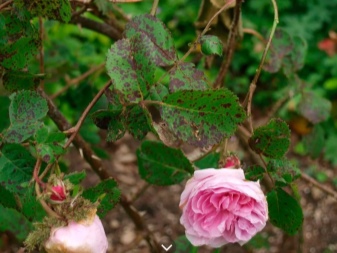
Viral
Rosebushes and lashes are quite vulnerable to dangerous viral diseases. Some species have developed strong immunity to certain groups of strains. But in general, it is rather difficult to diagnose the source of infection. Moreover, with the viral nature of the disease, it is only possible to limit its spread - it will not be possible to save roses. All infected bushes are removed from the greenhouse or from the site, then burned.
Among the main diseases of a viral nature on roses, the following are most common.
- A viral mosaic of rash. Insect pests are involved in the infection - thrips, nematodes, most often roses with weakened immunity, old and affected by sunlight or frost are exposed to the influence. On roses suffering from a viral mosaic of razuha, randomly arranged mosaic patterns of a milky yellow color appear. It is possible to prevent the spread of a viral disease by processing the tools used, replacing the land in the problem area, performing complex treatment with immune and insecticidal chemicals.
- Viral wilting. It manifests itself in the form of deformation of the leaves, followed by their browning and dropping, lagging of the rose in growth. The main problem is that early diagnosis of the disease is extremely difficult, it is often asymptomatic. It is necessary to fight the manifestations of the disease radically, with cutting down or severe pruning of bushes. Insecticidal treatments and sterilization of garden tools are also effective antiviral prophylaxis measures.
Among other viral diseases dangerous for roses, jaundice, VKP and leaf striping can be distinguished. Plants do not always die from them, but diseases negatively affect all vegetative processes, interfere with normal flowering.
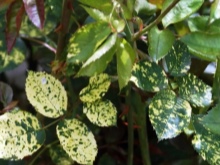
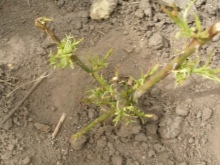

Fungal
The most dangerous diseases for roses are caused precisely by phytopathogenic spores of fungi. The processes of their reproduction are activated in conditions of high humidity, at atmospheric temperatures ranging from +15 to +28 degrees. Perennial flowering plants are often infected with them through damage to stems, leaves, roots, tools that have previously come into contact with already diseased crops. The most common fungal infections of roses are those presented below.
- Black spot. This fungus affects rose bushes from mid-spring, the air barely has time to warm up to +15 degrees, but at least 2 months pass from the moment of infection to visible manifestations of the disease. The spots are initially brown, dark gray or black in color, with a stellate edge. Gradually, the disease covers the entire leaf area, inhibits development, flowering weakens. Treatment requires an integrated approach, the introduction of potash fertilizers, fungicides with triazole and mancoceb, burning of the affected bushes.
- Powdery mildew. Mushroom mycelium can carry the winter inside the buds, fall on roses with the wind, or carry from instruments. With a lack of potassium, prolonged wet weather, the risks of developing the disease increase. The main sign of the development of powdery mildew is plaque on the surface of buds, leaves and shoots - it is white, gradually covering most of the plant. Prevention and treatment of the disease consists in periodically spraying the plantings with fungicidal preparations.
- Gray rot. The main symptom of this disease is the formation of non-opening buds, gradually rotting from the inside. They appear more often on greenhouse roses growing in greenhouse conditions without sufficient ventilation. The fungus can spread on bushes and during wintering if they are in a room with a temperature of about +10 degrees, covering the shoots and leaves with a grayish bloom. Treatment consists in cutting off infected shoots up to 2 buds from the place where signs of the disease appear, as well as spraying the stems and root area with fungicidal preparations.
- Pernosporosis. This condition is also known as downy mildew. In this case, a whitish bloom during infection appears exclusively on the back of the leaves, and dark spots, brown-violet, angular in shape, form on their front and stems. The disease spreads to the central vein of the leaf, then causes it to fall off. The spores of the fungus are not sensitive to frost, their destruction requires a full-scale fungicidal treatment, and sometimes the destruction of the plant.
- Septoria. This fungal disease is classified as spotting, the affected areas are covered first with dots, and then with growing light gray ulcers with burgundy edging. Gradually signs of septoria appear on the petioles, young new shoots. A rose can only be cured by systematic fungicidal treatment - repeated, thorough. You can use Trichopolum by dissolving 10 tablets of the substance in 5 liters of water for spraying.
- Rust. This disease most often manifests itself at the stage of bud formation on a bush or climbing rose at the end of April. The fungus appears in the form of yellow-orange swellings that form not only on the leaves, but also on the petioles, leafy part of the buds. In the late stage, the stem becomes covered with brown tubercles, the leaves turn brown and crumble. Plants infected with rust are practically not amenable to treatment, the affected shoots have to be removed and burned, preventing the spread of infection.
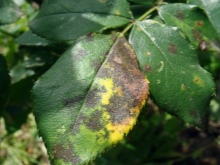
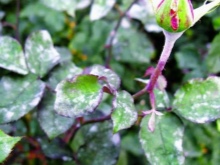
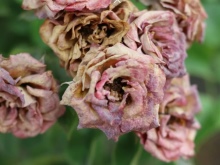
Fungal diseases, with some diligence, can be eliminated by preserving the roses. To prevent their development, regular treatment of plants with fungicidal preparations, aeration of greenhouses and greenhouses, and regulation of the level of humidity in them helps.
Bacterial
Diseases caused by pathogenic microorganisms often have no cure. Here it is customary to pay more attention to preventive measures, including sterilization of the instrument, it is necessary to follow the rules for pruning bushes, abandoning it in damp weather. It is also important to inspect the planting material, paying special attention to its quality and healthy appearance. Most often, roses are susceptible to certain types of bacterial infections.
- Stem cancer. It affects exclusively the shoots of the plant, leaving on them ring-shaped spots of brown or black color, bumps and seals, around which ulcers then form. As the disease develops, the shoots dry out, the bark falls off them. This type of bacterial infection is most dangerous for climbing and hybrid tea roses, but in general it can be noted that there is not a single variety that is completely resistant to this disease.
- Tracheomycotic wilting. The fungus that causes it, Fusarium, can persist for years in the soil, practically not showing itself until favorable conditions appear. These include finding the rose garden in a too humid and shady place. The danger of this bacterial infection is that it engulfs the vascular system of the plant, literally depriving it of food. The method of struggle also has to be chosen radical, with digging up the bush, disinfecting its roots with a 3% manganese solution or special preparations.
- Bacterial root cancer. It is a difficult to diagnose disease caused by the pathogen Rhizobium. External signs are only a general retardation of growth and development. An accurate diagnosis can be made only by the roots, on which tuberous growths appear, gradually acquiring black color. Even when the plants are destroyed, the bacterium is active in the soil for up to 4 years; it is impossible to plant new bushes in the same place.
- White sclerocial rot. The manifestation of infection can be found exclusively on the root collar, where the bacterium forms a dense plaque resembling cotton wool. General signs of plant damage in this case are quite standard - wilting of leaves, weak flowering, slow growth of shoots. With a strong infection, the white bloom passes to the stem. The only way to fight the disease is by digging up and burning the bush until it has infected nearby plants.
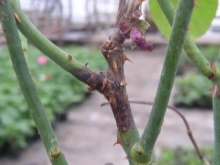
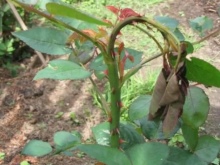
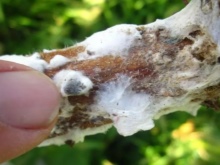
Regardless of the type of bacteria that caused the disease, the susceptibility of plants to them depends solely on genetically inherent immunity. That is why summer residents most often try to acquire varieties and hybrids that can successfully resist such infections.
Root rot
The cause of the problems in this case is the bacteria that form the myceliums on the roots of the rose. Most often, rot develops when the rules of care are violated, with waterlogging, overgrowing of ridges with weeds. The transfer can also occur as a result of poor-quality autumn harvesting of the rose garden. The infection is especially dangerous because it quickly covers all plantings in one territory.
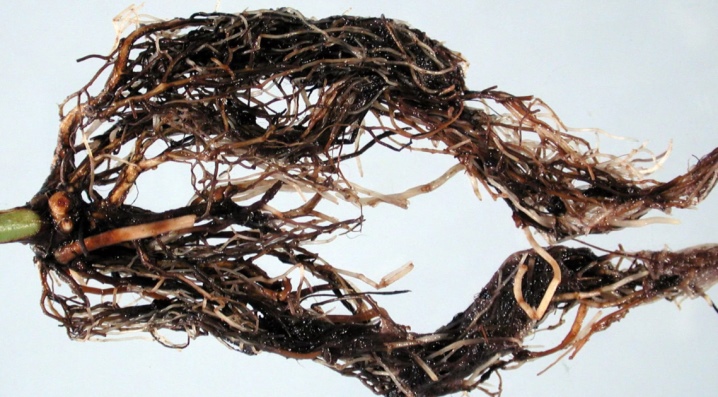
Necrosis
This problem usually arises as a concomitant disease of the fungal infection. Necrosis in any form is characterized by tissue death, loss of their vitality. Fortunately, they are quite treatable if diagnosed early. Necrosis refers to this type of disease as cytosporosis. With its development, the stems of the rose partially or completely dry out, but first brown tubercles appear on them, covering the bark. The timely treatment of the bushes with fungicides before bud break helps to prevent the development of the disease.
Diplodious necrosis that develops on the bark of a rose looks like traces of an infectious burn. It also encircles the stems, covering them with dense brown spots, in rare cases, passes to the leaves. After infection, they gradually die off, making the rose garden noticeably less decorative. To cope with this type of necrosis, multiple spraying with fungicidal preparations helps.
If the treatment fails, the infected roses are burned.

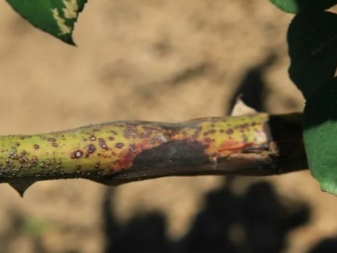
Non-infectious
This category includes diseases of roses that occur due to natural causes. The most common violations are as follows.
- Sunburn. It occurs during hot periods when solar activity is complemented by increased air temperatures. You can recognize the problem by noticing a change in the color and density of the sheet plate - it acquires a reddish-brown tint, stiffness. The treatment is the timely shading of the rose garden.
- Chlorosis of leaves. Discoloration of the plate, its yellowing and falling off is treated with simple agronomic measures. It is enough to normalize the acidity of the soil, adjust the top dressing, and provide full watering.
- Physiological aging of roses. All plants are subject to it, but especially grafted ones. You can notice the problem by thickening and dying off of the stems, reducing the number of buds. The plant can be rejuvenated by cutting out old shoots, but if it is also affected by fungal, viral or bacterial infections, it is better to abandon this idea.
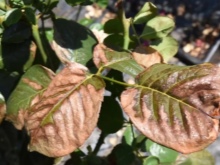
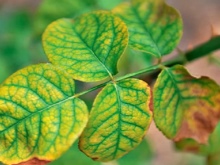
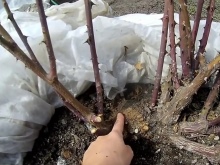
Pests and the fight against them
Treating rose bushes from insects is often complicated by the fact that pests are simply not visible on the stems and leaves. However, if the parasite eats shoots, destroys the green parts of the bush, it should be stopped. At home, preventive treatments with chemicals or folk remedies do not stop all year round. On the open ground and in the rose garden, it is important to spray the plants from beetles and caterpillars in June, at the first flowering. To understand in more detail how to spray the bushes from insects, an overview of the pests encountered will help.
Rose leaf roll
The caterpillars of these butterflies are capable of destroying young shoots and leaves in the rose garden. Their appearance can be recorded in early spring, when the buds are just opening. With a small infestation, the caterpillars can be collected by hand, in other cases the use of insecticides will be required.
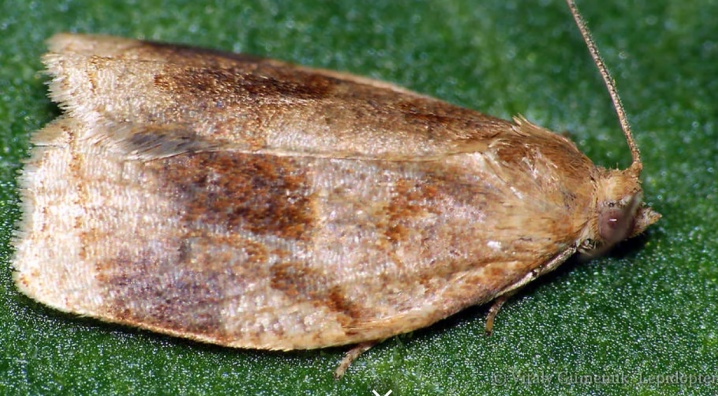
Spider mite
The appearance of this pest is almost impossible to miss - it leaves a fine mesh encircling buds and flowers. In a dry and sultry summer, the insect can literally suck out all the juices from the leaves and shoots. The fight against ticks begins with spraying with chemicals "Fufanon" or "Iskra-M", effective against these pests.
The treatment takes a long time, the procedure is repeated every 10 days until the symptoms disappear completely.
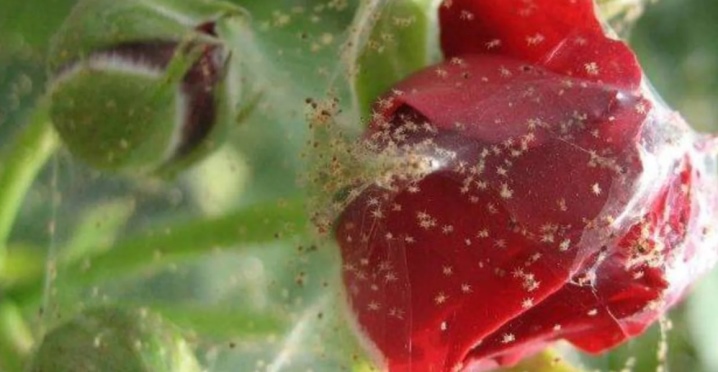
Shields
These parasitic insects are especially dangerous for indoor and garden roses. Stems and leaves after infection are covered with nectar - a sticky bloom secreted by insects, as well as characteristic hard "scales".
The secret that got on the shoots must be washed off, since a fungal infection can be transmitted through it. Then the attached shield will have to be cleaned off with a piece of cloth moistened with soapy water - insecticides are not used against the pest.
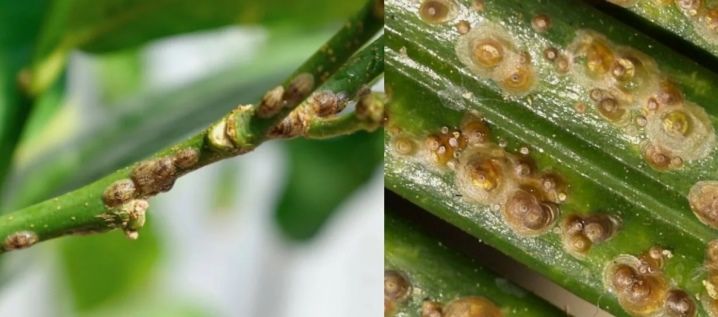
Thrips
Some of the smallest pests are flukes, feeding on the juices of shoots, flowers, buds and leaves. Thrips are light yellow, with a body no more than 1 mm. In places where they feed, rose shoots are covered with red specks. Any insecticides are suitable for processing - from "Fufanon" to biological products.

Aphid
The variety that strikes roses is large in size, has a green or brown color, elongated black antennae. The pest is especially active in June-July, eats young shoots and buds. Noticing the appearance of larvae, it is necessary to start spraying with alternating preparations "Inta-vir", "Commander", "Confidor", "Biotlin", "Fufanon". The procedure is carried out every 10 days until the end of the season.

Sawfly
Depending on the growing conditions, the rose is affected by the rosaceous slimy or comb downward sawfly. It eats up passages in leaves and shoots, disrupting metabolism. For the destruction of the pest, the same preparations are suitable as in the fight against aphids.
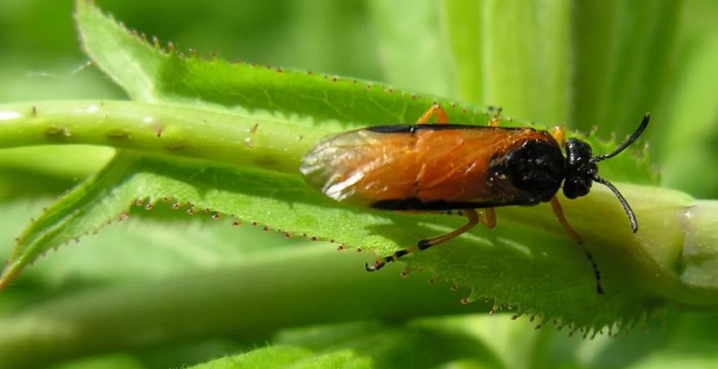
Penny slobber
She is an omnivorous leafhopper. Saliva-like discharge is formed by larvae living on the rose, sucking its juices. Control measures are standard - spraying with insecticides until the symptoms of infection disappear.
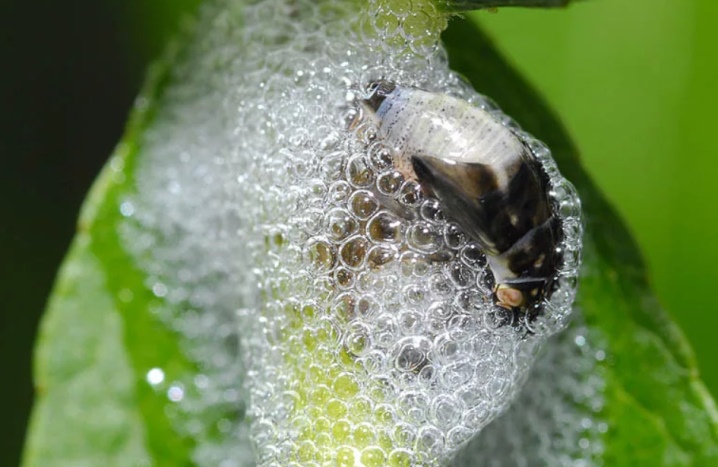
Prevention measures
You can protect roses from possible infection if you regularly carry out preventive measures in the flower garden. In most cases, the following steps will suffice.
- Treat the bushes in early spring with a complex of immunostimulating and antifungal drugs. You will have to repeat the procedure in 2 weeks. You can alternate Bordeaux mixture and Topaz with an interval of 3-4 days. At the stage of budding, use "Epin", "Kemira".
- Sterilize instruments thoroughly before and after use. The main way of transmission of infections is the negligence of the summer resident himself when pruning and leaving.
- Sterilize the soil, carefully dig it up, removing insect larvae.
- Select immune varieties. They are found among hybrid tea and among park roses.
- Follow the rules of agricultural technology. Observe the timing of watering, feeding, weeding the vegetation regularly.
- During the re-flowering period in July and August, treat with Kemira, then use Zircon a week later.
Subject to all safety measures, the protection of the rose garden will be at a height both in summer and in spring, it will preserve the beauty of the buds during flowering.
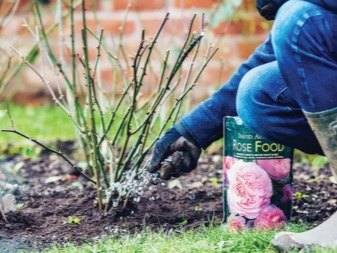
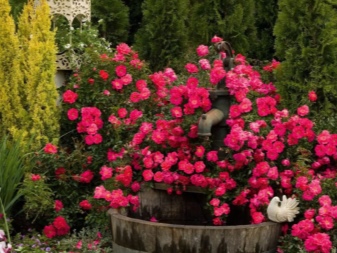













The comment was sent successfully.